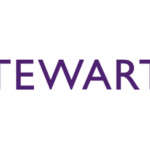As the COP26 continues its doings, one of the talks of town in the legal finance world this autumn is that about sustainability. Newspapers open up with announcements about investment funds gone green, social or sustainable, about private equity firms deciding to raise new funds to exclusively invest into climate-related issues, and about companies and firms setting up new cross-border strategies aimed at complying with ESG – environmental, social and governance – objectives. Consulting firms are issuing longest-ever reports about their ESG compromises and their commitment towards UN sustainable development goals. Legal and services firms are setting up cross-industry teams aimed to cope with the various deeds the market is looking at and will request, it seems, quite immediately. And yet behind all this, how will the legal finance world be affected? Do we need to change and adapt? True to sceptics, we have been doing renewable and green deals for many years, so what is the difference?
We can split this modern ESG thinking in at least two initial settings: looking inwardly towards our firms and institutions, to see what we need to adjust internally to progress towards ESG objectives, for the people in our firms, for the society we live in and for everybody’s future. It is not so much the legal services we can provide to our clients, but rather our commitment towards our own people and the societies we live in, towards the next generations and the planet. And looking outwardly, to see how we can, or need, to adjust our legal advice to the new requirements of private equity houses, banks and other financial institutions.
‘It is not so much the legal services we can provide to our clients, but our commitment towards the next generations and the planet.’Gaspar Atienza, Garrigues
The European Union has been at the forefront of this tremendous change with a battle of legislation and initiatives, including two key regulations. First, the so-called sustainable finance disclosure regulation (EU 2019/2088). This framework facilitates sustainable investment through, among others, the imposition of disclosure obligations on financial market participants and financial advisers. Second, the new taxonomy regulation (EU 2020/852), which sets out four ‘overarching conditions that an economic activity has to meet in order to qualify as environmentally sustainable’ and effectively results in a classification system for investments based on their degree of implementation of ESG principles and goals. If we lived behind the green loan LMA and ICMA green bond principles for a few years, we will now need to better understand the extensive and complex EU taxonomy. And this is just the tip of the iceberg of the regulation to come, as in 2022, we will have the environmental taxonomy fully implemented plus a taxonomy on social sustainability and many other developments.
The role and leadership of the European Investment Bank (EIB) is key in this development. The EIB, Europe’s climate bank, issued the Climate Bank Roadmap 2021-2025 describing how it intends to meet ESG expectations with its various financial products and advisory services. The term innovation is embedded everywhere, not only where it refers to meeting climate and sustainable goals, but in seeing the kind of financial products it needs to develop and enforce in the coming years. As a financier, the EIB and the EIF will turn to more complex legal instruments that combine various manners of financing different market actors: direct lending, infrastructure lending, intermediated products and risk-sharing instruments (as with the 2015 Juncker plan), direct loans, venture capital, equity instruments, multi-beneficiary products, general de-risking support, etc. The legal instruments will need to assess compliance with the objectives from a technical perspective, with a particular concern towards greenwashing. It is here where the legal documentation will need to adapt to include covenants and undertakings linked to these objectives and a new compliance methodology.
The EIB has been a pioneer in green bond and green loan products, already highly tested and used by many other banks, companies and financial houses. But the market and the EIB are also now aiming at financing SMEs through flexible and scalable products (guarantees, counter-guarantees or others different from loans) that can help companies and finance entities to deleverage. And of course, it is now at the forefront of innovative financial products combining equity-type instruments or venture-debt like contracts. It becomes increasingly common to find credits or loans that come with warrants or options over shares so that the deal combines a pure finance with an equity quicker, subject to a company’s performance or a successful exit or listing. By 2025, the EIB expects to sign approximately €30bn a year in support of climate action and environmental sustainability. This alone is a change maker in the European, and global, financial market. Legal finance teams will need to adjust the legal documents to the ESG principles and work with regulatory and technical experts to assert when and where they are met, or otherwise face the consequences.
For more information, please contact:

Gaspar Atienza, partner
Garrigues, Hermosilla, 3, 28001 Madrid (Spain)
T: +34 91 514 52 00
E: gaspar.atienza@garrigues.com












